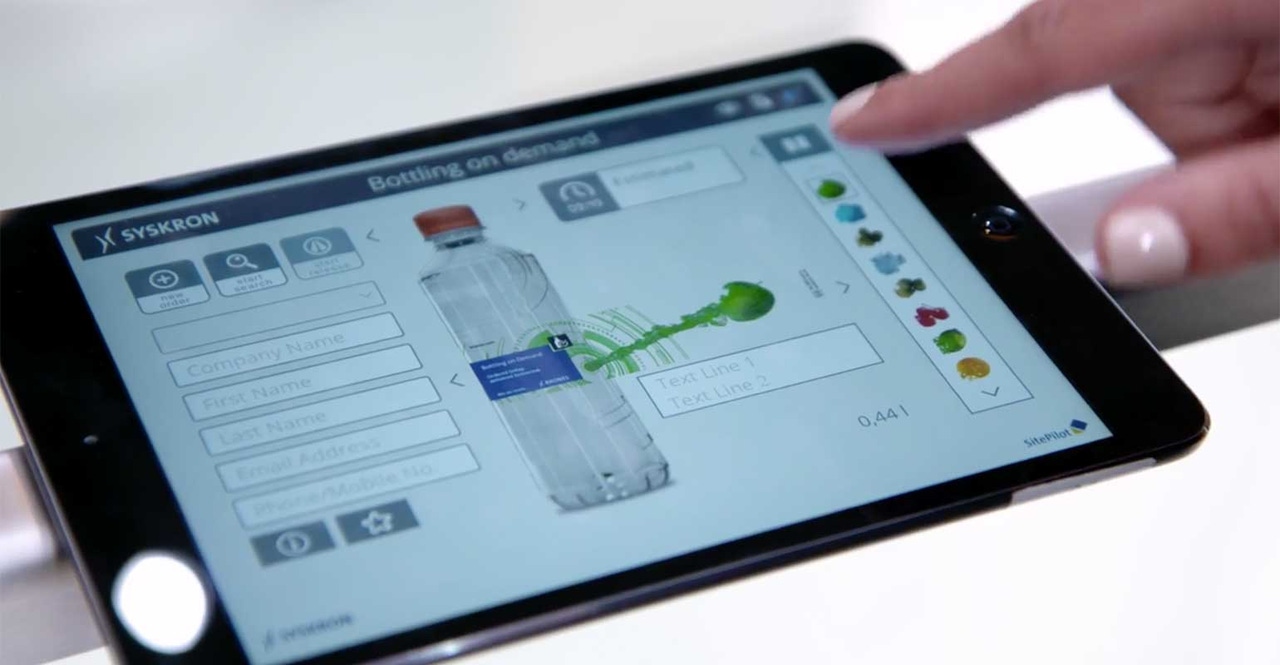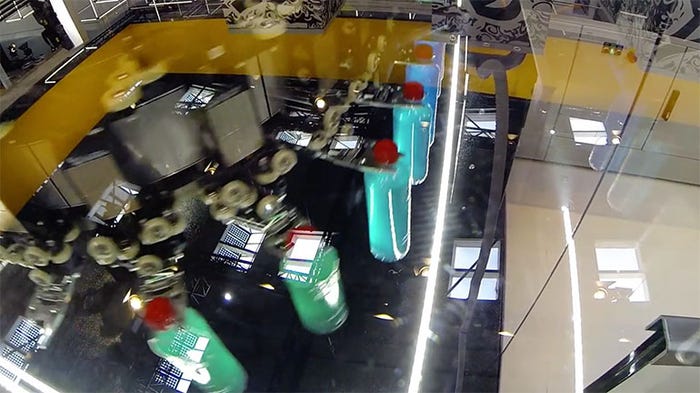Of Custom Shoes and Bottles: Digital Twin Technology Grows Up
An SAP executive shares his thoughts on everything from self-optimizing digital twin technology to the future of shoe manufacturing in an interview at Hannover Messe.
May 1, 2018

“The map is not the territory” — Alfred Korzybski
When does a computerized model of a physical object earn digital twin status? And when is that model just a simulation?
While there is no pat answer to that question, a vital part of the answer lies not in just the sophistication of the digital model, but in its IoT-based integration. While computerized models of the physical world have a long history (think CAD and process simulations), digital twins are different in that they can self-optimize over the course of a product’s or system’s life cycle. This capability gives manufacturers an ever-improving ability to prototype and experiment with new product and production concepts in the virtual world while optimizing future product generations with IoT-gleaned data.
Blurring the Lines Between Digital Twins and the Real World
As sophisticated as a given digital twin technology might be initially, it is difficult to anticipate the sheer number of variables that can affect production, whether it is humidity, temperature, the intensity of use of a given machine and so on. “We cannot predict all of the variables that can happen in reality,” said Gil Perez, senior vice president of IoT and digital supply chain at SAP in an interview at Hannover Messe.
For that reason, digital twin technology used for dynamic manufacturing processes should self-optimize, capturing data from production and, potentially, physical products in use in the field, as well as network with other related connected products, people and other digital twins. Then, that data can feed back into the digital twin, creating a closed loop that enables manufacturers to interface with a physical product as if it were internet-based software. “That’s the source of its power,” as consultant Bruce Sinclair wrote in the book “IoT Inc.” “The IoT product is software.”
Gartner estimates that, by 2021, half of large industrial companies will leverage the digital twin technology — primarily for monitoring and controlling assets and production.
[IoT World Europe in London is where industrial enterprises learn to put IoT to work and reap the commercial benefits. Get your tickets and free visitor tickets now.]
At Hannover Messe, SAP demonstrated its approach to digital twin technology by highlighting a customer, Krones, a German company showcasing a manufacturing line for bespoke bottle production in SAP’s booth.
Digital twins could open up new possibilities for traceability. “Let’s say I wanted to pick up a bottle and wanted to see exactly what temperature the liquid was at when it was filled,” Perez said. “To do that, I would need some kind of ID on the bottle with an ID code — whether a QR code, barcode or another form of ID and a digital twin,” he added. The same principle could enable a factory worker donning an AR-enabled helmet or headset to merely glance at the bottle and obtain information about the bottle’s provenance, seeing contextual data overlaid on top of a bottle within an AR headset or on a device such as a tablet computer. Digital twin technology also opens up new vistas for customizing products, creating, for instance, bottles with bespoke labels and caps or custom shoes.
Digital Twins and the Future of Footwear
While there is a growing market for standardized products such bottles, digital twins could ultimately lead to new approaches for manufacturing products such as shoes and earbuds, Perez said. Already, SAP is working with several companies to create custom insoles. But in the future, Perez expects this trend to expand to include shoes customized to the anatomy of the wearer’s feet. “Most of the time, shoe sizes only provide a length measurement. Sometimes they provide width, but they don’t account for the foot’s volume,” Perez said. “Many people who buy shoes online put the shoes on and find they aren’t very comfortable because the volume isn’t right. Or they might find that certain brands fit them better, but the way shoes fit can even vary from model to model within a brand.”
Another dimension of how shoes fit is the so-called foot posture. “Are you pronated, are you not? Do you need a lot of support?” Perez asked. “For that, you need to walk and have gait analysis.”
As digital twin technology and manufacturing technology advances, the price of producing semi-custom shoes for certain demographics will fall, ultimately giving way to fully bespoke shoes and other types of products.
Things are already starting to move in that direction with companies like Adidas with its SpeedFactory initiative, which produces semi-custom shoes and Nike, which just acquired computer vision firm Invertex. “The point is the whole industry is moving that way,” Perez said. “I do not doubt that in the next four to five years, we will see more personalized shoes. Also, you will see custom insoles for women who wear high heels.” And beyond that, shoes with sensors embedded into them could capture performance data used to inform the design of future shoe generations.
Manufacturing as a Service
The megatrend underlying the march toward custom production is the rise of manufacturing as a service. “With the commoditization of manufacturing, completely new business models will be created,” Perez said. As the cost of production falls, more players will enter the market to capture a piece of the global footwear market, which could be worth $371.8 billion by 2020, according to data from Allied Market Research.
“I could set up a website and offer shoes from 10,000 designers. It could be my daughter who wakes up in the morning and designs a shoe.”

Already, American canvas shoemaker Keds has flirted with offering custom shoes and sponsored competitions with the Fashion Institute of Technology and Pratt Institute to reward innovative shoe design.
As the cost of manufacturing falls, production is also poised to move closer to end users. “As manufacturing moves closer to the edge, think about how that will impact logistics companies,” Perez said. SAP is working with UPS on an on-demand distributed manufacturing program that could blur the lines between logistics facilities and factories, giving UPS the ability to churn out and immediately ship 3-D printed goods.
3-D printing could also dovetail with Industrie 4.0 concepts such as predictive maintenance, Perez said, citing an SAP customer who specializes in producing machines for packaging and bottling. “This company makes production lines that are almost completely customized. One might be for bottling ketchup, another for liquid soap, another for beer,” he said. “And they have a lot of customized parts, which creates a real issue with maintenance and support because it is very costly to maintain all of the spare parts for such a huge portfolio of products.”
SAP has worked with this company to create digital twin technology to enable them to 3-D print custom replacement parts either when a digital twin of the production process signals that the component is failing or, less optimally, when the part breaks. “This is very similar to a spare tire scenario. But in this case, I might need to wait five weeks to receive the replacement part,” Perez said. “While I wait for the replacement part to show up, I can 3-D print five replacements that each last for about 10 days. It’s similar to having a spare tire on a car. You have to drive a little slower and be careful, but at least you can get around and get to the tire shop when you are ready.”
About the Author
You May Also Like






